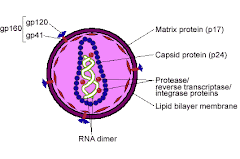"Most users smoke crack, although in rare cases, they may inject it. To smoke crack cocaine, the user places the drug into a small glass pipe (sometimes called a "straight shooter"). He or she then places a small piece of a steel wool at one end of the pipe tube and puts the rock on the other side of this filter. When the rock is heated from below, it produces a vapor, or smoke. The user inhales that vapor into his or her lungs. From there, the drug is taken up by the person's bloodstream.
When it gets into the body, crack acts upon a part of the brain called the ventral tegmental area (VTA).
It interferes with a chemical messenger in the brain called dopamine, which is involved in the body's pleasure response. Dopamine is released by cells of the nervous system during pleasurable activities such as eating or having sex. Once released, dopamine travels across a gap between nerve cells, called a synapse, and binds to a receptor on a neighboring nerve cell (also called a neuron). This sends a signal to that nerve cell, which produces a good feeling. Under normal conditions, once the dopamine sends that signal it is reabsorbed by the neuron that released it. This reabsorption happens with the help of a protein called the dopamine transporter.
Crack interrupts this cycle. It attaches to the dopamine transporter, preventing the normal reabsorption process. As dopamine builds up in the synapse, it continues to stimulate the receptor, creating a lingering feeling of exhilaration or euphoria in the user.
Because crack is inhaled as a smoke, it reaches the brain much faster than inhaled powder cocaine. It can get to the brain and create a high within 10 to 15 seconds, compared to the 10 to 15 minutes it takes to feel the effects of snorted cocaine. The crack cocaine high can last anywhere from five to 15 minutes."
Wednesday, September 19, 2007
The Effect Of "Crack" In The Body
Subscribe to:
Post Comments (Atom)


















No comments:
Post a Comment